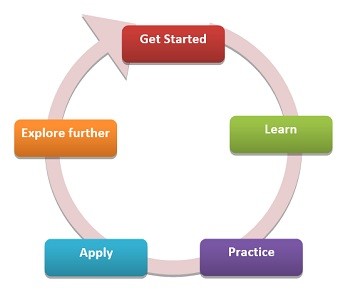Introduction | Get Started | Learn | Practice | Apply | Explore Further | Checkpoint
This module consists of five steps. Click on Get Started to learn more about this module.
You can navigate through the sections and topics under each step by clicking on the boxes below. To review a section again, simply click on one of the boxes. You can come back to any section at anytime!

- Challenges with costing at the commercialization stage
- Why is costing important?
- What factors need to be considered?
From the product specifications, the marketing strategy and the final prototype product, commercialization builds into three important functional plans (marketing, production and finance) and then into an overall operational plan. These are combined together as shown in Figure 6.1, which shows the different outcomes needed in each plan. The outcomes from the three plans are combined in an operational plan for the launch. After the launch there is a review of the final outcomes.
During commercialization, the knowledge required to formulate these plans has to be found, organized and integrated. It starts with information from the product design and process development: product and packaging qualities, product concept, target market, price range, market channel, physical distribution, process flow sheet, process conditions, product testing.
At this point, final adjustments are made to the product so that it is acceptable not only to the consumers but also to the company’s operational divisions, the retailers and other people in the distribution system.
With industrial products, the commercialization plan has to be acceptable across the different groups in the buying company – product development, quality assurance, production and buying.
The product and its inner and outer packages need to be tested through production and distribution to determine if the packaging provides the necessary protection to the product and also meets the expected demands of distribution, sale and use. Some of the product prepared during the small plant tests can be tested in large consumer/customer ‘use’ tests. In industrial marketing, it is important not only that any new materials are acceptable in the manufacturer’s plant but also that the manufacturer’s product is acceptable to the consumers. In consumer marketing, there are further consumer ‘use’ tests and sometimes a small test market, representative of the overall market, will be used to validate the effects of different prices and promotions.